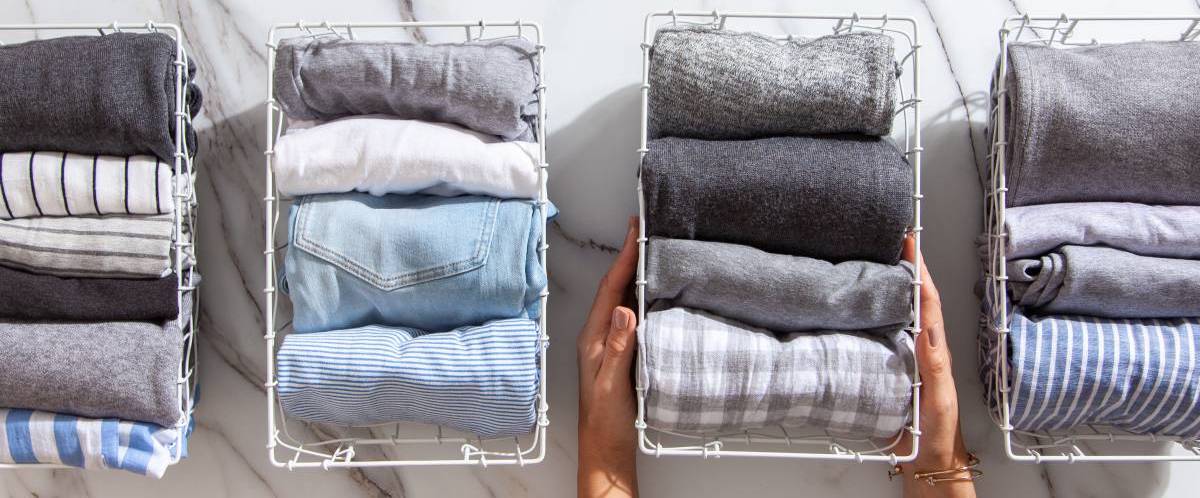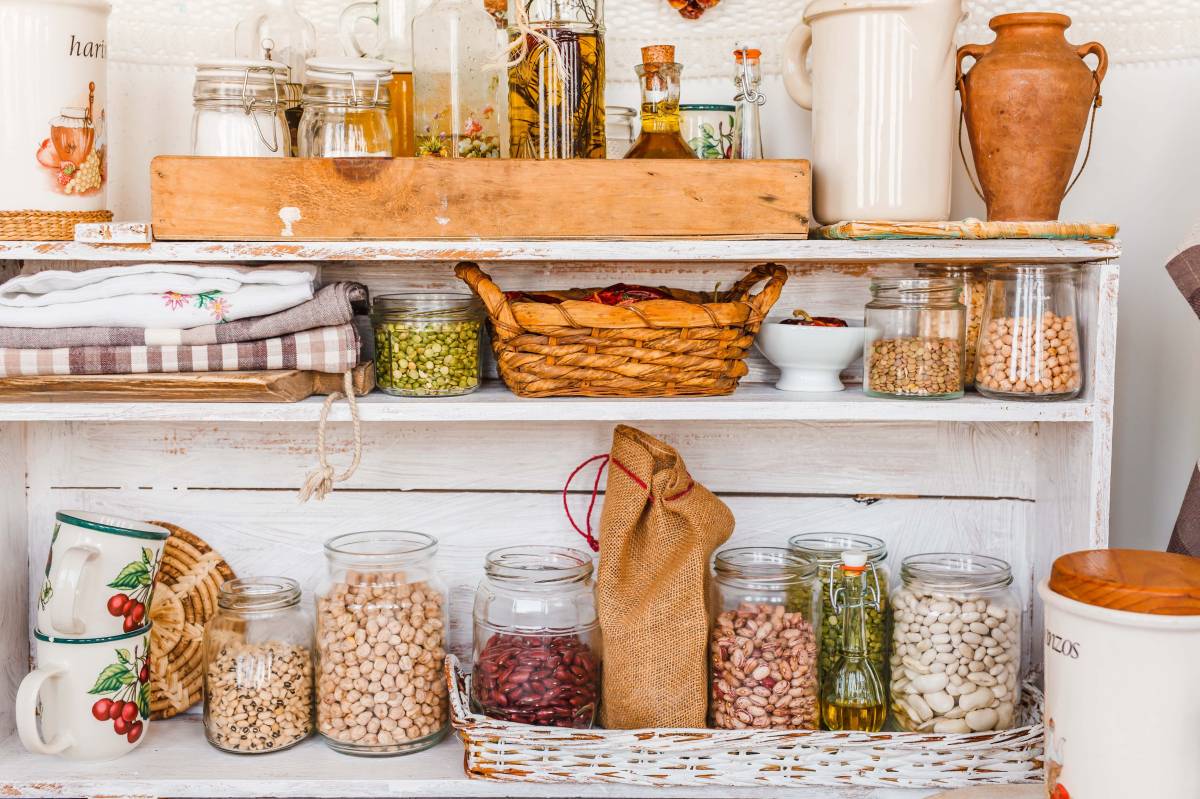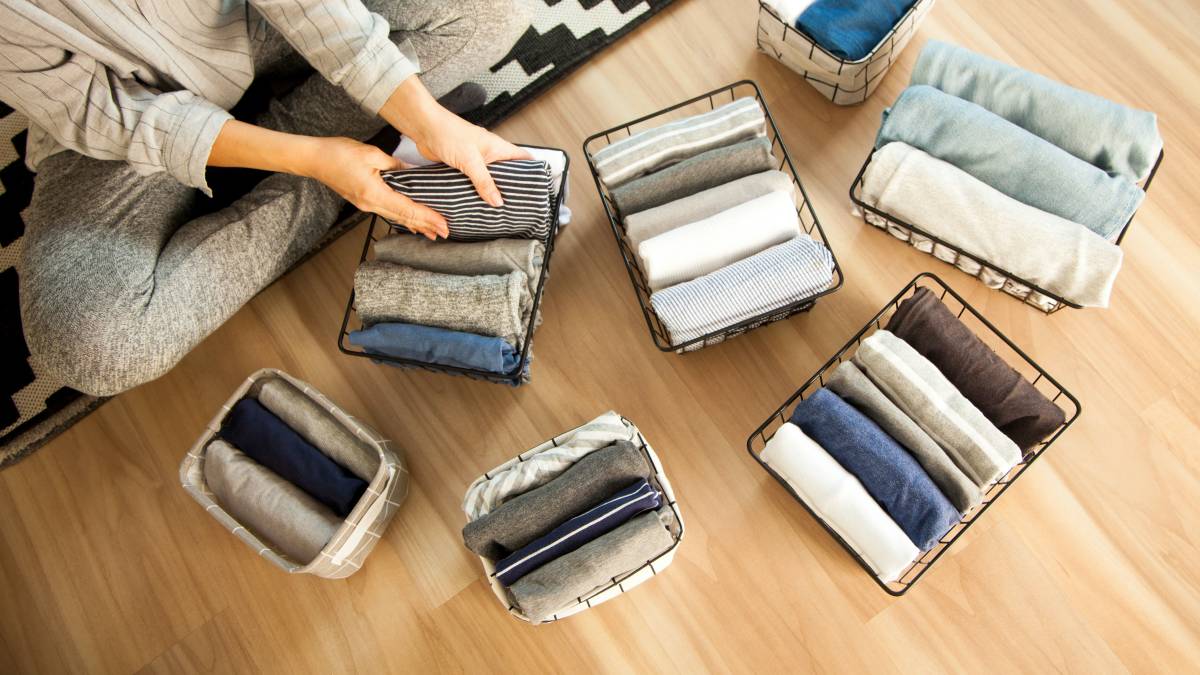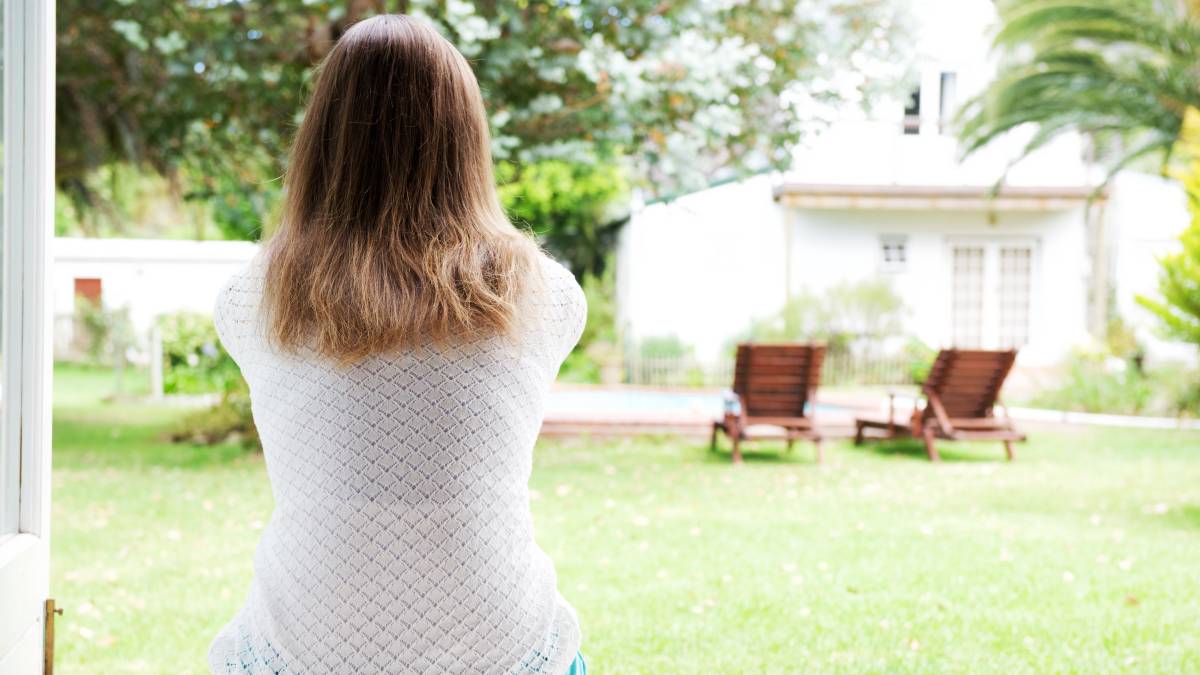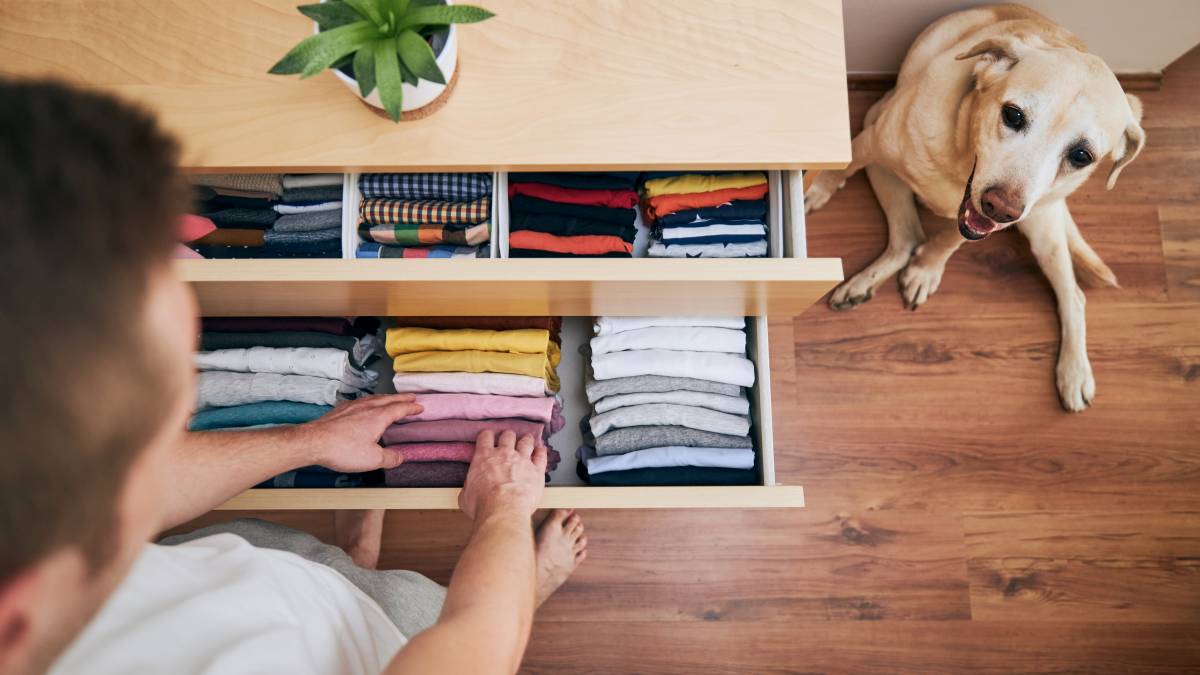- Home/
- Guides/
- Decluttering/
- How to Declutter Your House in One Day
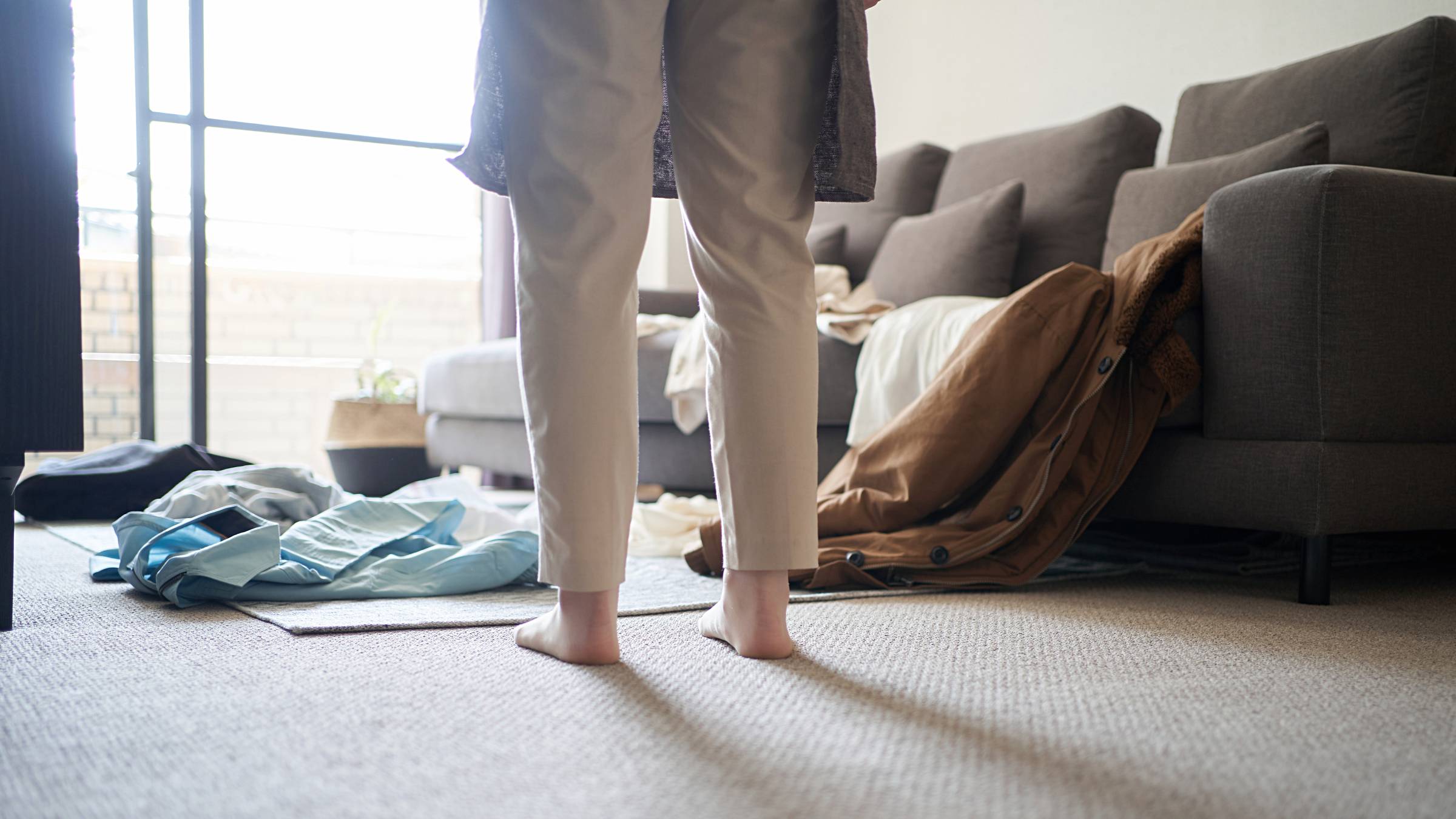
From chaos to calm: How to declutter your house in one day
Achieving a better home through systematic decluttering
Hire a pro organiserLast Updated on
Key Takeaways
- You can declutter your entire house in one day by setting clear goals, prioritising spaces, and following a strict timeline.
- Use the one-hour power clear-out, implement the three-box system for sorting, and apply the twelve-month rule to make quick decluttering and organising decisions.
- Maximise storage by utilising vertical space and innovative solutions like stackable drawers, and keep your home tidy with daily habits and regular purges.
Need to declutter your house fast? If you’re on a tight schedule and don’t know how to declutter your house in one day, we’ve prepared a no-nonsense plan to help you efficiently sort, purge, and organise your space. This guide will provide room-by-room actions tailored to tight timelines. By the end of the day, you’ll see a clear difference without feeling drained.
Creating your decluttering game plan

When reflecting on how to organise your home, a game plan is essential. Decluttering can be a huge task if you haven’t done it in a while. But with a solid strategy, you can tackle your clutter systematically.
Define your decluttering goals
Decluttering is not just about throwing things away. It’s about respecting your current self and how you live. Thus, it becomes necessary to establish your objectives. What do you want to achieve by decluttering? Do you want to create extra space in your laundry room or organise your camping gear? Or maybe you want to find your seasonal clothing without digging through a pile of clothes. Whatever your goals, having them clear in your mind will make the decluttering process easier.
Prioritise your spaces
Once your objectives are set, it’s time to prioritise your areas. You may be tempted to start with the space that has the most clutter or the one that bothers you the most. But here’s a pro tip: start with the areas you use the most. Whether it’s your kitchen, living room, or home office, decluttering these spaces will immediately impact your everyday life. Plus, you’ll see the benefits immediately, motivating you to continue cleaning other areas.
Sorting things into categories can also help you declutter more efficiently. When you have everything sorted by type, it’s easier to see how much of each item you have and decide what to do with them. So start by categorising your stuff and then tackle one category at a time. This will keep your process manageable.
Set a one-day timeline
Now, you might be thinking, ‘All of this in one day? That’s impossible!’ But listen. The key to organising your home is to set a realistic timeline and stick to it. Start by making a to-do list and allocating time for each task. Remember to prioritise tasks like:
Sorting through your clothes and donating or discarding items you no longer need
Organising your kitchen cabinets and pantry
Clearing out your bathroom and getting rid of expired products
Tidying up your living room and organising your bookshelf
Using drawer organisers to declutter your bedroom
By staying focused, you can declutter and clean your house in one day. And yes, this project can be tiring, so don’t forget to take breaks or break the task into smaller chunks.
Kick-starting the decluttering process
With your game plan set, it’s time to initiate the decluttering process. This may be overwhelming, but these tactics can help you gain momentum.
The one-hour power clear-out
This is a great way to see instant results. Dedicate one hour to quickly clear out clutter from a specific area in your home. During this one-hour clear-out, focus on getting rid of:
Obvious trash
Items you no longer need
Torn towels and sheets
Excess small appliances
Dead batteries
Cluttered clothing or shoes
If you come across broken items, set a deadline to fix them. If you can’t meet it, recycle or toss them. Remember, the goal here is not to organise the area perfectly but to clear out as much clutter as possible.
Once you’ve done this, you’ll feel a sense of accomplishment, which will encourage you to tackle the rest of your tasks.
The three-box system
Next up, implement the three-box system. This is a simple yet effective method for sorting. It involves creating three categories: ‘Keep,’ ‘Donate/Sell,’ and ‘Trash.’ As you review each item, decide which category it falls into and place it in the corresponding box.
This system not only helps you make quick decisions about each item, but it also keeps your decluttering process simple. Once everything is sorted, take the necessary actions for each box’s contents. Keep items are put back in their designated places, Donate/Sell items are packed up to be given away or sold, and Trash items are disposed of properly. And just like that, you’ve sorted through a pile of clutter!
The 12-month rule
Last but not least, apply the 12-month rule. This rule states that if you haven’t used an item in the last 12 months, it’s time to let it go. This is a great way to decide whether to keep or discard items.
Of course, there are exceptions. For example, seasonal items like holiday decorations or winter coats may not be used for several months, but that doesn’t mean you should get rid of them. The key here is to be honest with yourself about whether you will actually use an item in the future. If the answer is no, it’s time to let it go.
Maximising your storage space

With the decluttering process well underway, let’s focus on maximising your storage space. After all, decluttering is not just about getting rid of stuff; it’s also about creating a place for everything you decide to keep.
Utilise vertical space wisely
One of the best ways to maximise storage space is to use vertical space, which can include making the most of shelf space. This is especially useful if you’re dealing with small rooms. With a few smart strategies, you can create extra storage without taking up any floor space.
Start by installing floating shelves on your walls. These provide extra storage and add a touch of style to your room. Wall-mounted organisers and pegboards are also great options. They’re perfect for storing tools, craft supplies, and even kitchen utensils.
And don’t forget the back of your doors. You can attach storage racks to your closet doors or under-sink cabinets for additional storage. With these tips, you can make the most of your space!
Embrace stackable drawers and bins
Next, embrace stackable drawers and bins. These are perfect for keeping your items organised and easy to find. Whether it’s your craft supplies, office tools, or even your wardrobe, stackable drawers and bins can make a difference.
When choosing stackable bins, consider the following factors:
Size: Make sure the bins fit your space and can accommodate the items you want to store.
Durability: Look for bins that are made of sturdy materials and can withstand daily use.
Design: Choose bins that match your home’s decor and aesthetic. Remember, the intention here is not just to create more storage but also to make your space look neat. So don’t be afraid to invest in quality storage solutions that serve both functions.
Optimise closet door and under-sink areas
Last but not least, don’t forget about the closet door and under-sink areas. These often-overlooked spaces can provide a ton of extra storage if used wisely.
For hall closet doors, consider installing over-the-door storage racks. These racks can hold various items, from shoes and accessories to cleaning supplies and even pantry items.
As for under-sink areas, pull-out drawers and stackable bins can help you maximise the space. With a bit of creativity, you can turn these hidden spaces into valuable storage areas!
Streamlining the kitchen and laundry room
Let’s move on to two areas that often need extra attention: the kitchen and the laundry room. These are usually bustling with activity and can quickly become cluttered.
Refresh your kitchen cabinets and pantry
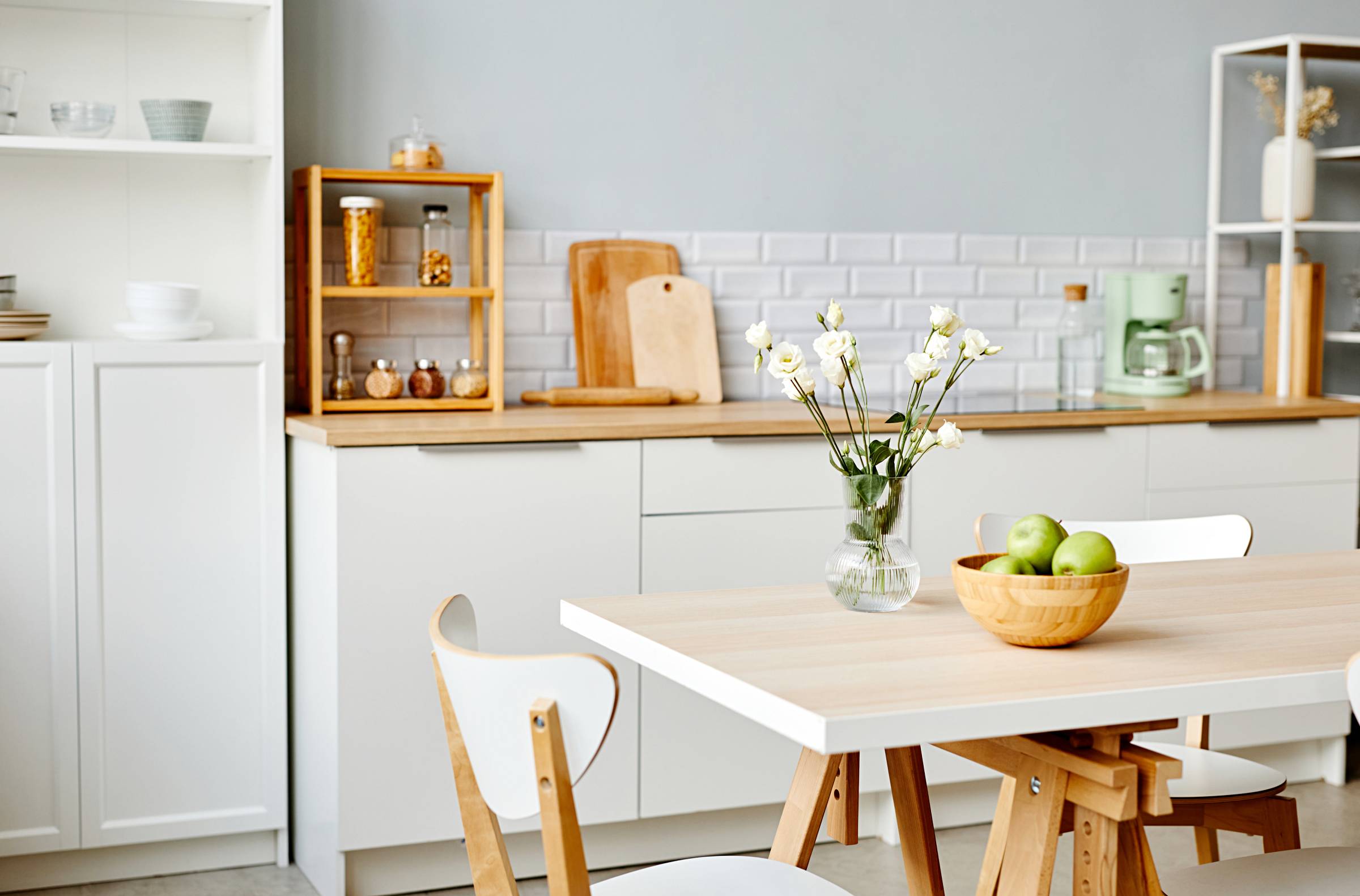
Starting with the kitchen, the cabinets and pantry are often the most cluttered house areas. From pots and pans to food products and small appliances, these spaces can quickly become a jumbled mess.
Start by taking everything out and sorting items into categories. Then follow these steps to organise your pantry:
Get rid of items that are expired, broken, or no longer needed.
Invest in storage containers and labels to help you sort the items you’re keeping. Clear bins are great for storing food products, as they allow you to see what’s inside without having to open them.
Use labels to quickly identify items, saving you time and effort in the long run.
By following these steps, you can create a pantry that is easy to navigate.
Transform your laundry room
Moving on to the laundry room, this space often becomes a dumping ground for dirty clothes, cleaning supplies, and miscellaneous items.
Begin by getting rid of any items that don’t belong in the laundry room. Then, consider your storage needs. Do you need space for hanging clothes to dry? Or perhaps you need more containers? Once you’ve figured this out, you can invest in storage solutions, like wall-mounted drying racks, shelves, and bins that meet your needs.
Remember, a well-organised room makes doing the laundry easier and a bit more enjoyable!
Ensuring living room and bedroom bliss
With the major tasks out of the way, it’s time for the final touches. Let’s focus on the living room and bedroom, two areas where you spend most of your time. These spaces should be inviting and relaxing.
Simplify the living room
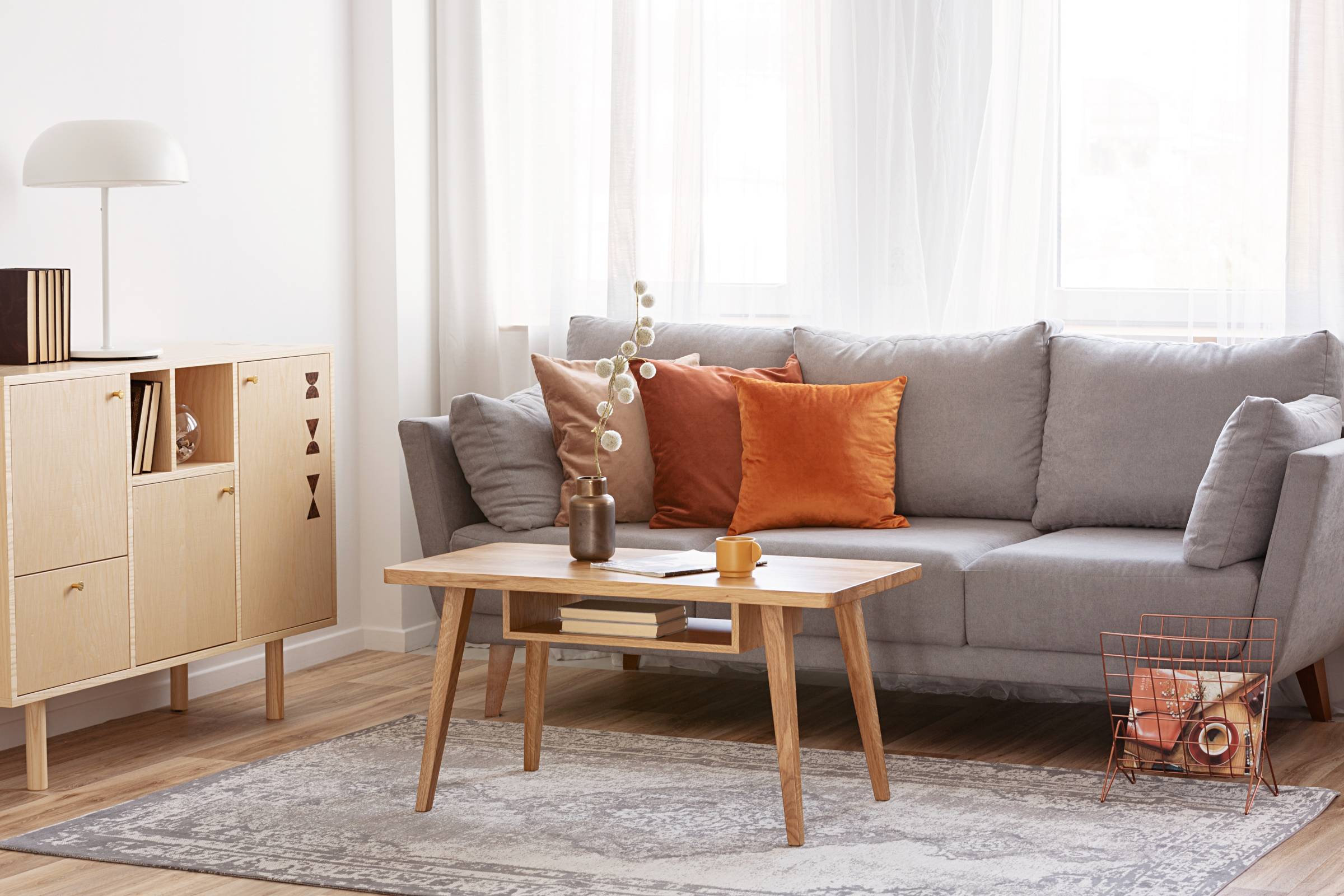
The living room is the heart of the home. It’s where you relax, entertain, and spend quality time with your loved ones. But all too often, it becomes a dumping ground for toys, mail, dishes, and other everyday items. Simplifying your living room makes it more inviting and enhances its functionality.
Start by removing excess throw pillows and blankets that can clutter the couch and chairs. Next, focus on your entertainment centre. Keep only the items you use regularly and donate or sell the rest. And finally, invest in storage solutions, like baskets, ottomans, and trunks for items that are necessary but don’t need to be displayed.
Ultimately, a simplified living room is a peaceful living room.
Restore serenity in the bedroom
The bedroom should be a tranquil sanctuary where you can relax and recharge. As such, restoring serenity in the bedroom involves creating a space that promotes relaxation.
Start by removing items that don’t contribute to a restful environment. These include work materials, workout equipment, and even electronic devices that disrupt sleep. Then, organise your closet and drawers. Use drawer dividers to separate your clothes and make them easy to find. And finally, create a calming atmosphere. Choose soothing colours, soft lighting, and comfortable bedding.
With these changes, your room will become an oasis where you can truly relax and recharge.
Maintaining an organised home
Congratulations! You’ve decluttered your space, creating a peaceful and inviting home. However, maintaining organised homes requires some ongoing effort. Here are some tips:
Develop daily decluttering habits
First, let’s talk about daily decluttering habits. Small daily actions can make a huge difference. These include cleaning up after meals, putting things back in their place after use, and sorting mail as soon as it arrives.
In addition to these daily tasks, take a few minutes each day to declutter a small area in your home. This could be a drawer, a shelf, or even a section of your closet or wardrobe. Doing a little each day makes decluttering manageable and prevents clutter from building up over time. And remember, consistency is key. Make decluttering a daily habit, and you’ll keep your home clutter-free.
Follow the ‘one in, one out’ rule
This simple rule can prevent clutter from accumulating in your home. For every new item that comes into your home, one item must go out.
This applies to everything in your home, from clothes and shoes to books and kitchen gadgets, including store items. It helps you maintain balance and prevents you from accumulating too much stuff.
Remember, every object in your home should have a purpose and a place. If a new item is coming in, make sure it has a place, and if it’s replacing something, make sure the old item goes out.
Schedule regular review and purge sessions

It’s important to do a thorough review and purge every few months. This enables you to reassess your possessions, get rid of anything that’s no longer needed, and reorganise areas that have become messy over time.
Schedule these sessions based on your needs. You may need to do it more often for specific areas, like your closet or kitchen, and less often for others. Make these sessions a priority, and treat them as an opportunity to refresh your space and keep your home tidy.
Make home decluttering easier with Airtasker
Overall, decluttering your house can be tedious, but it’s absolutely achievable. Remember, it’s not just about creating a tidy space. It’s also about creating a peaceful, inviting, and functional home that supports your lifestyle and well-being.
If you wish to get a head start in your decluttering journey, Airtasker’s professional organisers are ready to help. After setting your budget, posting a task, and choosing the right expert for your needs, you can look forward to transforming your home into a sanctuary of order and serenity.
FAQs on home decluttering
You’ll mostly need things you already have: trash bags, boxes or bins for donations/selling, and a cleaning cloth. For sorting, you can use laundry baskets or even just sections of the floor. Comfy clothes and shoes are key, and gloves can be helpful if you’re dealing with dusty or dirty stuff. If you have them, a sheet or blanket can protect surfaces while you declutter, and a label maker can be a timesaver for marking boxes or bins.
Decluttering is a marathon, not a sprint. So celebrate your progress, acknowledge your fatigue, and adjust your plans. Set smaller, realistic goals for the next day or weekend, focusing on specific areas or categories. Remember, progress is progress, even if it doesn’t fill all the bins you envisioned. You’ll get there, one step at a time!
If you have supportive family members who are willing to help and sort through their own belongings, involving them can be a great way to make the process more efficient and enjoyable. It can also be a bonding experience and help everyone develop better decluttering habits. However, if you think your family will be more of a hindrance than a help, or if you’re decluttering mostly personal items, it might be best to tackle it on your own.
Don’t toss your old tech with the trash! Instead, give it a responsible second life: Donate functioning devices to schools, charities, or friends and family. Safely wipe and recycle outdated items at e-waste drop-off locations like big-box stores and community centres. And research repair options if your electronics are on the fritz before sending them off. It’s good for the planet and keeps harmful materials out of landfills!
Find decluttering services, fast
Find a Decluttering expert
Related articles

How to become a house sitter
Read more
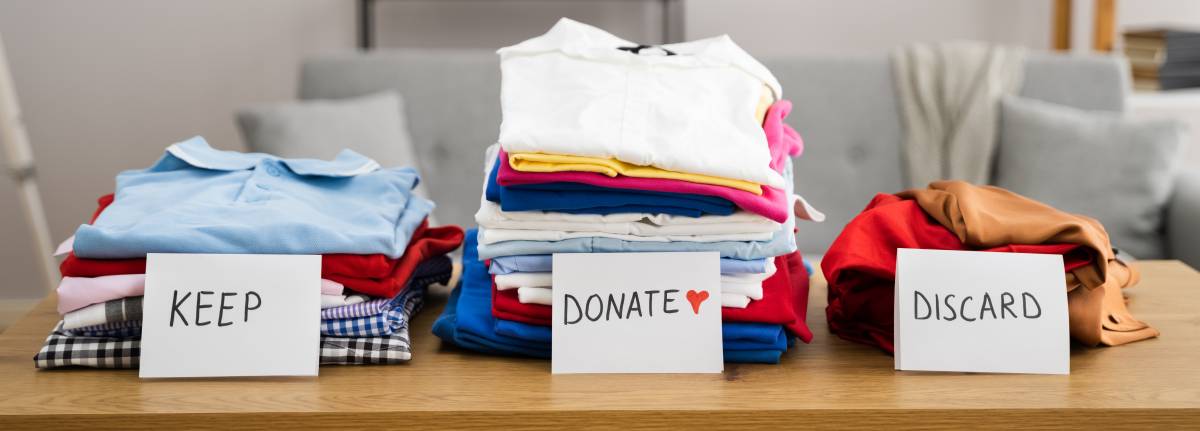
How to declutter before moving house
Read more
Related price guides
